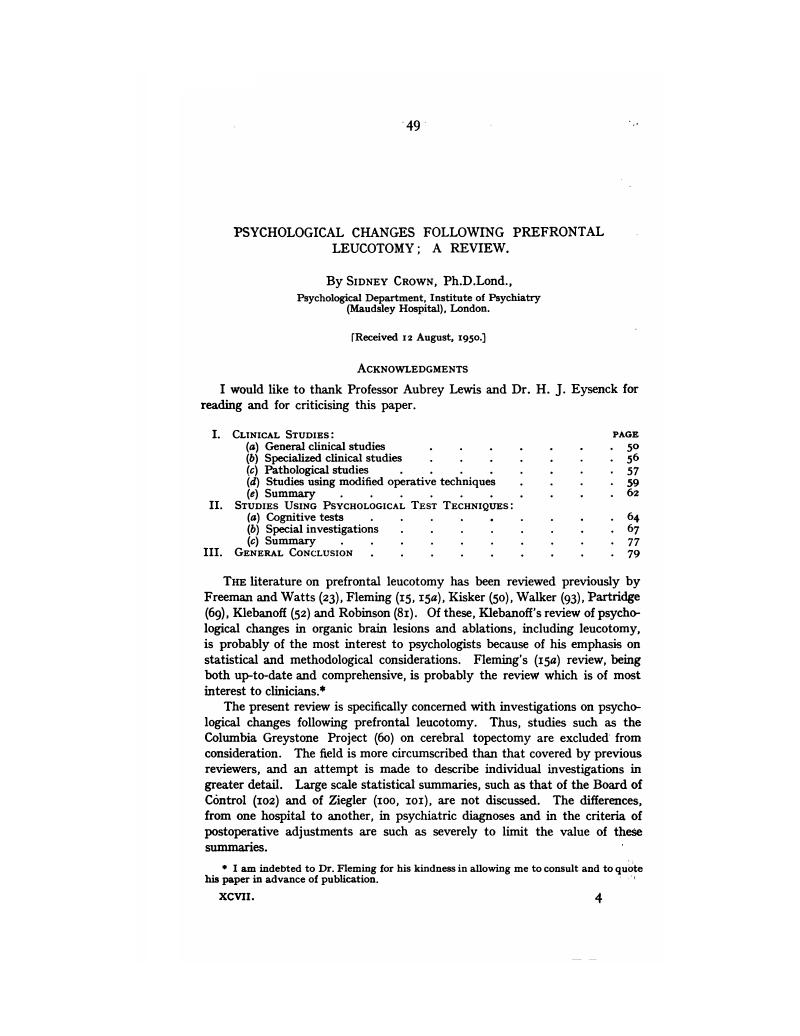Crossref Citations
This article has been cited by the following publications. This list is generated based on data provided by Crossref.
Thorpe, F. T.
and
Hardman, James
1952.
The Lower Quadrant Leucotomy.
Journal of Mental Science,
Vol. 98,
Issue. 412,
p.
389.
MERCER, MARGARET
and
HECKER, A. O.
1953.
AN OUTLINE AND BIBLIOGRAPHY FOR A SEMINAR IN CLINICAL PSYCHOLOGY FOR RESIDENT PHYSICIANS IN PSYCHIATRY.
American Journal of Psychiatry,
Vol. 110,
Issue. 1,
p.
48.
Beau, Jacques Le
and
Petrie, Asenath
1953.
A Comparison of the Personality Changes After (1) Prefrontal Selective Surgery for the Relief of Intractable Pain and for the Treatment of Mental Cases; (2) Cingulectomy and Topectomy.
Journal of Mental Science,
Vol. 99,
Issue. 414,
p.
53.
Yates, Aubrey J.
1956.
The use of Vocabulary in the Measurement of Intellectual Deterioration—A Review.
Journal of Mental Science,
Vol. 102,
Issue. 428,
p.
409.
Tizard, Barbara
1958.
THE PSYCHOLOGICAL EFFECTS OF FRONTAL LESION: A review of the evidence.
Acta Psychiatrica Scandinavica,
Vol. 33,
Issue. 2,
p.
232.
Smith, Aaron
1960.
Changes in Porteus Maze Scores of Brain-Operated Schizophrenics After an Eight-Year Interval.
Journal of Mental Science,
Vol. 106,
Issue. 444,
p.
967.
Heimann, H.
1963.
Grundlagen und Methoden der Klinischen Psychiatrie.
p.
660.
Sykes, M. K.
and
Tredgold, R. F.
1964.
Restricted Orbital Undercutting.
British Journal of Psychiatry,
Vol. 110,
Issue. 468,
p.
609.
Meier, M.J.
and
Story, J.L.
1967.
Selective impairment of Porteus maze test performance after right subthalamotomy.
Neuropsychologia,
Vol. 5,
Issue. 2,
p.
181.
Schalling, Daisy
and
Cronholm, BÖRje
1967.
“Resistensen” hos ordförradstest och deras användbarhet vid bedömning av intellektuell reduktion.
Nordisk Psykiatrisk Tidsskrift,
Vol. 21,
Issue. 4,
p.
299.




eLetters
No eLetters have been published for this article.